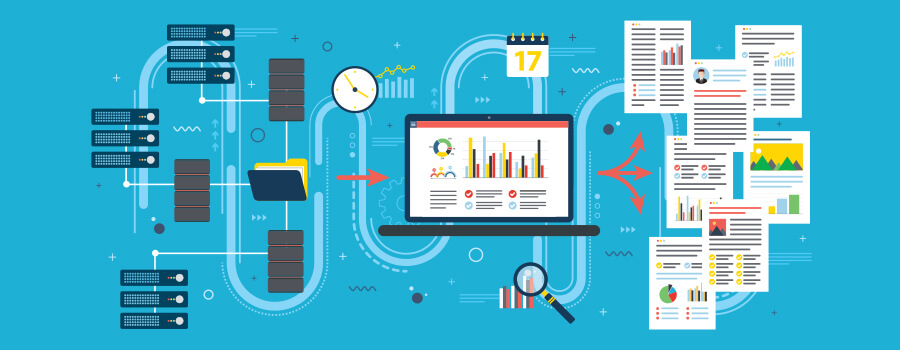- October 29, 2020
- Posted by: Suhith Kumar
- Category: Text Analytics

Human language is perhaps the most sophisticated natural communication system. Its ability to express ideas on a wide array of topics, to seek information, provide orders is unparalleled. Each language has tens of thousands of words in its vocabulary, enabling speakers to build limitless phrases and sentences, whose connotations are developed from the meaning of the individual words. While the use of languages has evolved over time, its design and power of expression remain unchanged.
That bit of detail about the human language is an essential prelude to Natural Language Processing (NLP solutions). After all, NLP is the integration of natural language into computers through programming.
What is Natural Language Processing?
A subset of artificial intelligence (Ai), NLP deals with the interaction between humans and computers in the human language to analyze and process large volumes of natural language-based data.
NLP also makes it possible for computers to hear speech, gauge sentiment and identify the important elements in text.
Being reminded to add an attachment to the email having referenced it in the text or body of the email, predictive text and spellcheck are among the common, everyday examples.
How does Natural Language Processing work?
A typical interaction between humans and computers using Natural Language Processing could be as follows:
- Humans talk to computers
- Computers capture the audio (speech)
- They then convert audio to text
- Text data is processed subsequently
- Data is converted back to audio
- Computers play back the audio file as a response to humans
Importance of NLP
NLP helps extract key information from unstructured data in the form of audio, videos, text, photos, social media data, customer surveys, feedback and more.
Another important feature is it resolves lack of clarity in human language and adds numeric structure to data from downstream applications such as text analytics, speech recognition, et cetera.
Natural Language Processing techniques for extracting information
Back in the day, most language processing systems were designed by hand-coding a set of rules or formulating experimental rules for stemming.
Modern systems are based on machine learning algorithms.
Also known as entity chunking, it’s a technique to identify and segment named entities and classify them under predefined classes.
Any text document consists of terms representing entities that are informative and provide a unique context. Known as named entities, they comprise real-world objects such as people, places, organizations, dates and more from text.
While NER is normally based on grammar rules and supervised models, platforms such as open NLP have pre-trained and in-built NER models that identify corresponding entities in each plain text.
Stemming and lemmatization
In natural language processing, users may want their program to identify, for example, words “call” and “called” being different tenses of the verb. The objective here is to reduce different forms of a word to its root, often a part of data pre-processing.
Stemming is one approach to reduce words to their root forms and stemming algorithms are usually rule-based. A word is analyzed and run through conditionals to identify how to stem it.
Lemmatization is about reducing words to their dictionary form. However, to resolve a word, it would need to know its part of speech (PoS). It, therefore, requires added computational linguistics power.
It’s worth mentioning that results could be different when implementing languages other than English, though the concepts are largely the same.
Text summarization
As the name suggests, it’s a technique to summarize or shorten a block of text while extracting and conveying the most important, relevant information.
Summarizing text can be achieved through extractive and abstractive text summarization.
In extractive text summarization, the important sentences of a piece of text are identified and reproduced as a summary. Only the existing text is used.
In abstractive text summarization, powerful natural language processing methods are applied to decipher and generate new summary of text.
It’s worth mentioning that currently most summarization processes are extraction-based as abstractive techniques are challenging to implement.
Sentiment analysis
It is one of the popular techniques and is particularly useful in deriving information from customer surveys, feedback and social media comments, which indicate customer sentiment about a brand or an organization. The typical result of a sentiment analysis solution is positive/negative/neutral.
Supervised and unsupervised methods are employed to perform sentiment analysis. Naïve Bayes is a popular supervised model. It needs a collection of data with sentiment labels to train the model that then determines the sentiment.
Sentiment score is the sum of scores generated by each positive (+1) and negative word (-1) in a piece of text.
You might be interested to read: Why Sentiment Analysis plays a key role in strategy formulation
Topic modeling
It refers to using a qualitative algorithm to identify one or a set of topics that forms the crux of the body of text.
Topic modeling helps overcome the noise and identify the signal of text data, which in turn helps begin the process of generating insights.
Let’s say we want to extract the corpus of text and its features (words) into several topics. It’s essential to first know the topics and identify the contents before the text could be transformed from a noisy collection of words to streamlined group of topic loadings.
Summary
Above-mentioned are a select few of the natural language processing-based techniques that help extract information from unstructured text. The extracted information can either be directly consumed or used as part of machine learning models and clustering to improve accuracy and performance.
Want to transform your business with proper decision-making? Choose teX-Ai, a trustable text analytics solution provider.

